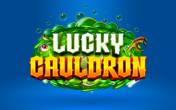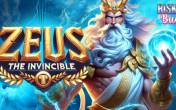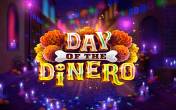_770.jpg)
The answer to the question posed by the title of this article is very simple. Any basic strategy table will advise you when to hit or stand. We confirm the correctness of this decision and recommend that you always play in this way.
However, it can be difficult for novice players to decide on that. They fear getting a ten-value card, which will lead to a bust. Moreover, they think two ten-value cards will be the next in the shoe and provide the dealer with a 22. Applying this reasoning, many inexperienced players stop following the basic strategy and make their own decisions. Casinoz experts do not approve of that. Below, we will explain why.
Probability of Different Outcomes
First, consider this: only four cards out of thirteen possible cards will result in a bust. So the probability of continuing the game after taking a card is over 60%. At the same time, a deuce at the dealer means that in 35%, he will bust, and in 65%, he will have between seventeen and twenty-one.
Compare for yourself. The odds of the next card leading to a set of twenty-two are not that high. On the other hand, the dealer is almost twice as likely to win on a deuce as he is to lose.
However, the possible outcomes have long been calculated, and the reality is this:
- If you stand, the probability of losing is about 65%.
- If you hit, the probability of losing is about 63%.
The numbers may vary slightly with one rule or another, but it doesn't change the overall picture. Taking a card on twelve when the dealer has a deuce is more profitable from the point of view of mathematics, and this science is the main thing in blackjack.
This situation is not initially favorable for the player, but if you hit, he will lose less than when standing in the long run.
Exceptions to these recommendations are only possible if you are counting cards and see that there are a lot of tens in the shoe, increasing the probability of you busting. But even in such a situation, it can be useful to take a card because pit bosses calculate the counters just by such decisions, which contradicts the basic strategy.
Basic Strategy for a 12 Against a Dealer’s 2:
Hit:
The standard basic strategy for a 12 against a dealer’s 2 is to hit.
Why Hit?
Risk of Busting:
While hitting on a 12 carries a risk of busting (if you draw a 10-value card), the dealer’s 2 is also a weak card. The dealer is likely to hit multiple times, which increases their chances of busting. However, your hand is too weak to stand confidently, so hitting gives you a better chance of improving your hand.
Dealer’s Potential Hand:
If the dealer has a 2, their most likely outcome is a hand total between 12 and 16 after hitting. These are considered "stiff" hands, where the dealer is more likely to bust. Your 12 is also a stiff hand, and hitting gives you a chance to improve to a stronger total like 17 or higher, which could win against a dealer's weak hand.
Considerations
Possible Outcomes:
When you hit, you improve your hand to a strong total if you draw a 9, 8, 7, 6, or 5. Drawing a 10, of course, would bust you, but given the dealer’s weak upcard, the odds suggest hitting is more favorable than standing.
House Edge:
Following the BJ basic strategy helps minimize the house edge over the long term. In this situation, hitting on a 12 against a dealer’s 2 is the statistically correct move, even if it feels risky.
| Name | Soft | Return to player | ||
|
|
99.78% | |||
|
|
99.69% | |||
|
|
99.65% | |||
|
|
99.6% | |||
|
|
99.59% | |||
|
|
99.59% | |||
|
|
99.54% | |||
|
|
99.54% | |||
|
|
99.54% | |||
|
|
99.33% |
Conclusion
When dealt a 12 and the dealer shows a 2, your best move is to hit. While there’s a chance you might bust, the odds are more favorable than standing, as you have a higher probability of improving your hand or taking advantage of the dealer's potential to bust.




































